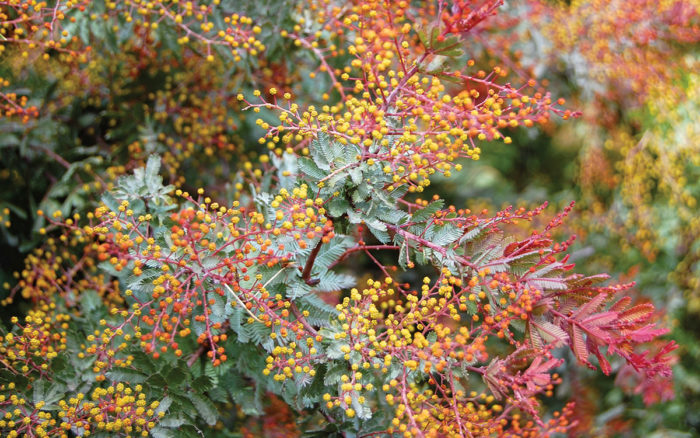
Evergreens are crucial to achieving varied texture and form, as well as the key to any successful four-season garden. Unfortunately, many gardeners would put a lot of evergreens in the “necessary but boring” category. They are a backdrop, the much-needed greenery during colder months, but never the garden star that steals the show.
The plants below might just change your mind about the humble evergreen. These foliage all-stars can be called anything but boring. From beautiful blooms to colorful foliage and pops of bright berries, all of these evergreens have that little something extra.
1. Toyon

Heteromeles arbutifolia
Zones: 8–11
Size: 6 to 20 feet tall and 5 to 15 feet wide
Conditions: Full sun to partial shade; lean, well-drained soil
This California native can be considered either a small tree or a large shrub. Although toyon is actually a member of the rose family, its leathery leaves are more reminiscent of holly. The serrated foliage along with bright red pomes (fruit) account for its other common names: Christmas berry and California holly. The ripe berries are good for making jam, and wild animals love them. Though toyon is tough and adaptable, it likes a bit more moisture than most other chaparral natives. Masses of clustered, small white flowers make this tree perfect for a pollinator garden or even a wildfire-resistant one.
2. Purple Baily’s Acacia
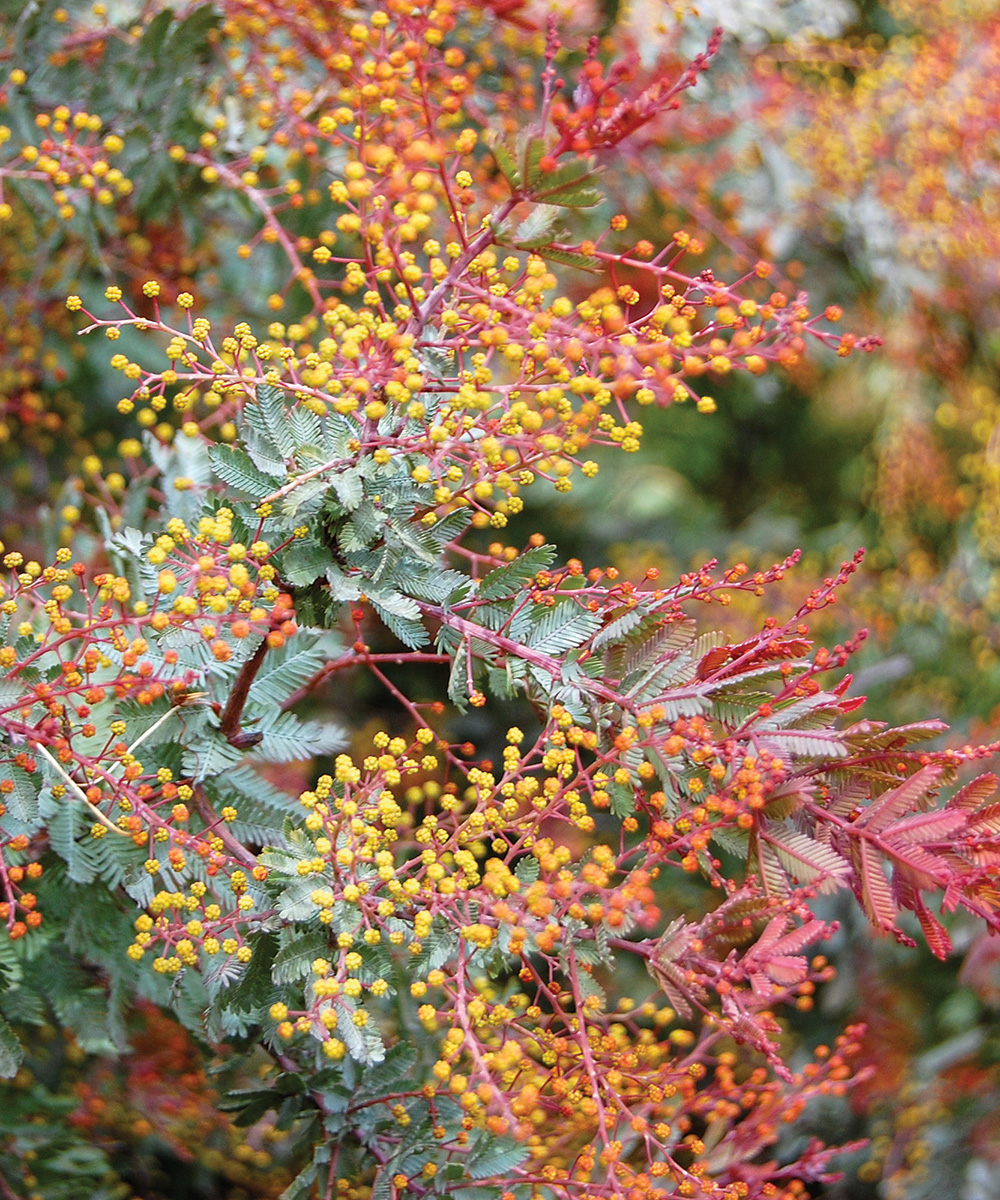
Acacia baileyana ‘Purpurea’
Zones: 8–10
Size: 15 to 20 feet tall and 20 to 40 feet wide
Conditions: Full sun; lean, average to dry, well-drained soil
This fast-growing, small Australian tree or tall shrub is one of my favorites because it has decorative leaves as well as colorful flowers. The fine-cut, delicate, lacy leaves are tinged gray-green but blend to purple with new growth. The foliage coloration serves as a focal point in the landscape, and as a bonus, purple Baily’s acacia is smothered with sweet-scented, fuzzy, golden yellow, button-like flowers in early spring. Use it as a stand-alone accent or in a group or row to define space or mask unwanted views. Unlike many other acacias, this one is thornless.
3. Bottle Tree

Brachychiton populneus
Zones: 8–11
Size: 50 to 60 feet tall and 12 to 30 feet wide
Conditions: Full sun; lean, moist to dry, well-drained soil
Another evergreen native to Australia, bottle tree is a drought-resistant option that can thrive from coast to desert in the Los Angeles area. It has a unique upright, conical shape that allows it to fit in relatively narrow spaces. It can also stand on its own or join a small grouping to create a sculptural statement. Glossy leaves shimmer in the breeze, while the dense crown offers both deep shade and wind protection. In the United States, bottle tree draws its name from the slightly bottle-shaped flare of the lower trunk, where it stores water. Aboriginal clans in Australia would tap the smooth trunk for water in droughts, and the seeds could be roasted for food or used as a coffee substitute.
4. Australian Willow
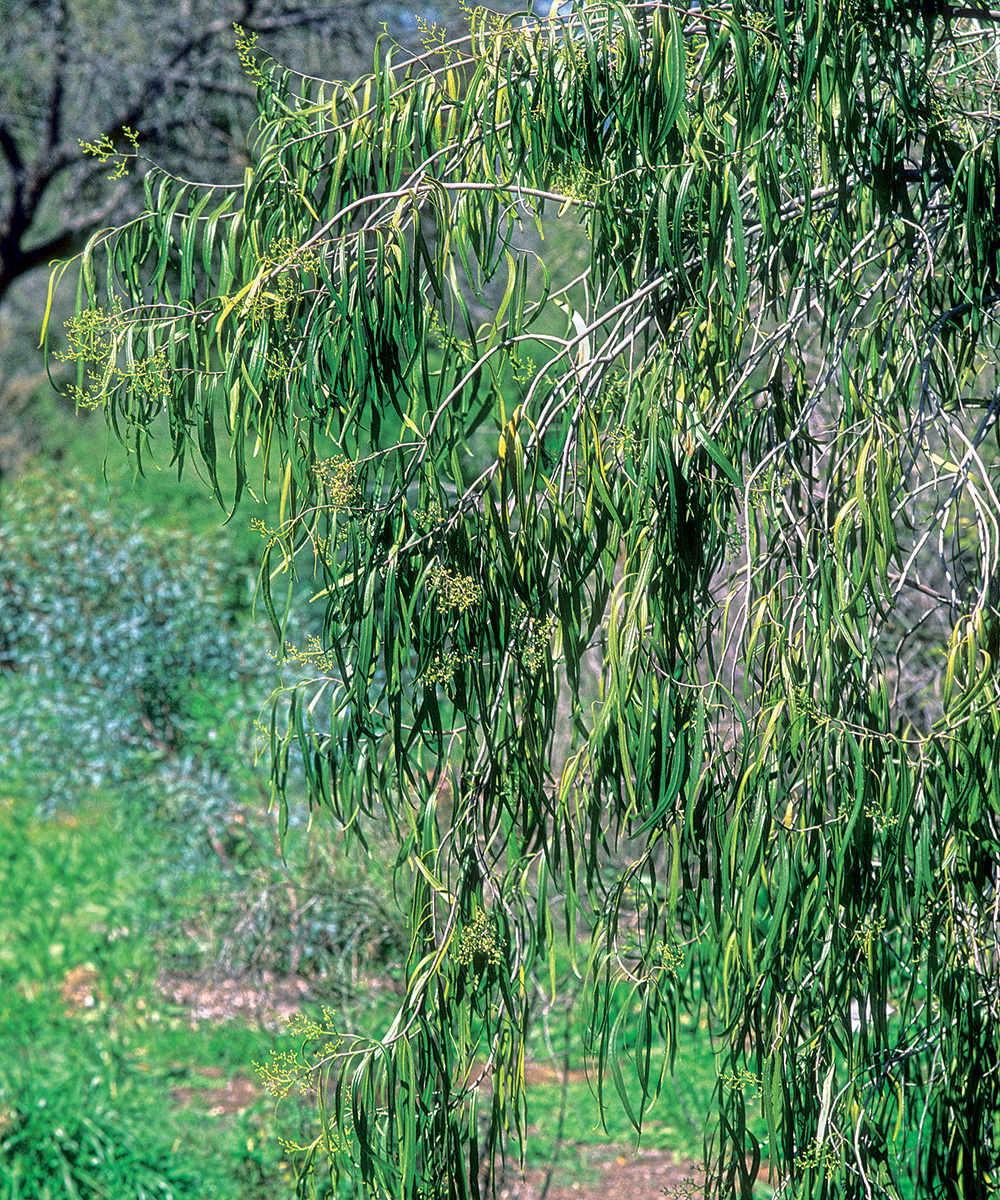
Geijera parviflora
Zones: 9–11
Size: 20 to 30 feet tall and 20 feet wide
Conditions: Full sun; lean, well-drained soil
Australian willow is an extraordinarily well-behaved tree. It blends the romance of slightly weeping branches and willow-shaped leaves with a neat, medium-size growth habit. Unlike so many other trees, this one would never consider tripping anyone with invasive roots. In spring, it clothes itself with delicate, dangling, tiny white flowers that are delightfully fragrant. If you love the look of a willow tree, this is the perfect choice for a more modest-size garden. It does not have high water demands, surface roots, or many of the pests and diseases of a true willow.
Jane Gates is a landscape designer from Los Angeles.
Fine Gardening Recommended Products

Black and Decker 22-inch Cordless Hedge Trimmer
Fine Gardening receives a commission for items purchased through links on this site, including Amazon Associates and other affiliate advertising programs.
- 38 x 7 x 7 inches
- 6.9 pounds
- 1 Lithium Ion battery required (included)

DeWalt Variable-Speed Cordless Reciprocating Saw
Fine Gardening receives a commission for items purchased through links on this site, including Amazon Associates and other affiliate advertising programs.
- 18.31 x 6.13 x 4 inches
- 1-1/8-inch stroke length
- Variable speed trigger with 0-3000 spm

DeWalt Variable-Speed Cordless Reciprocating Saw with 6-Piece Saw Blade Set
Fine Gardening receives a commission for items purchased through links on this site, including Amazon Associates and other affiliate advertising programs.
- 18.31 x 6.13 x 4 inches
- 1-1/8-inch stroke length
- Variable speed trigger with 0-3000 spm
- DW4856 Metal/Woodcutting Reciprocating Saw Blade Set, 6-Piece




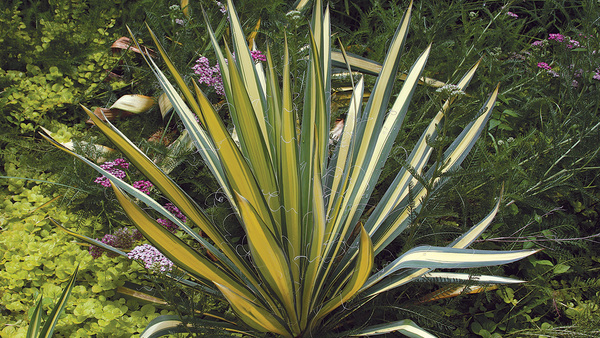
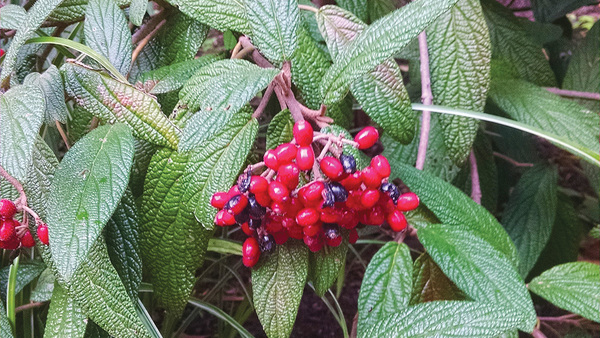













Comments
Log in or create an account to post a comment.
Sign up Log in